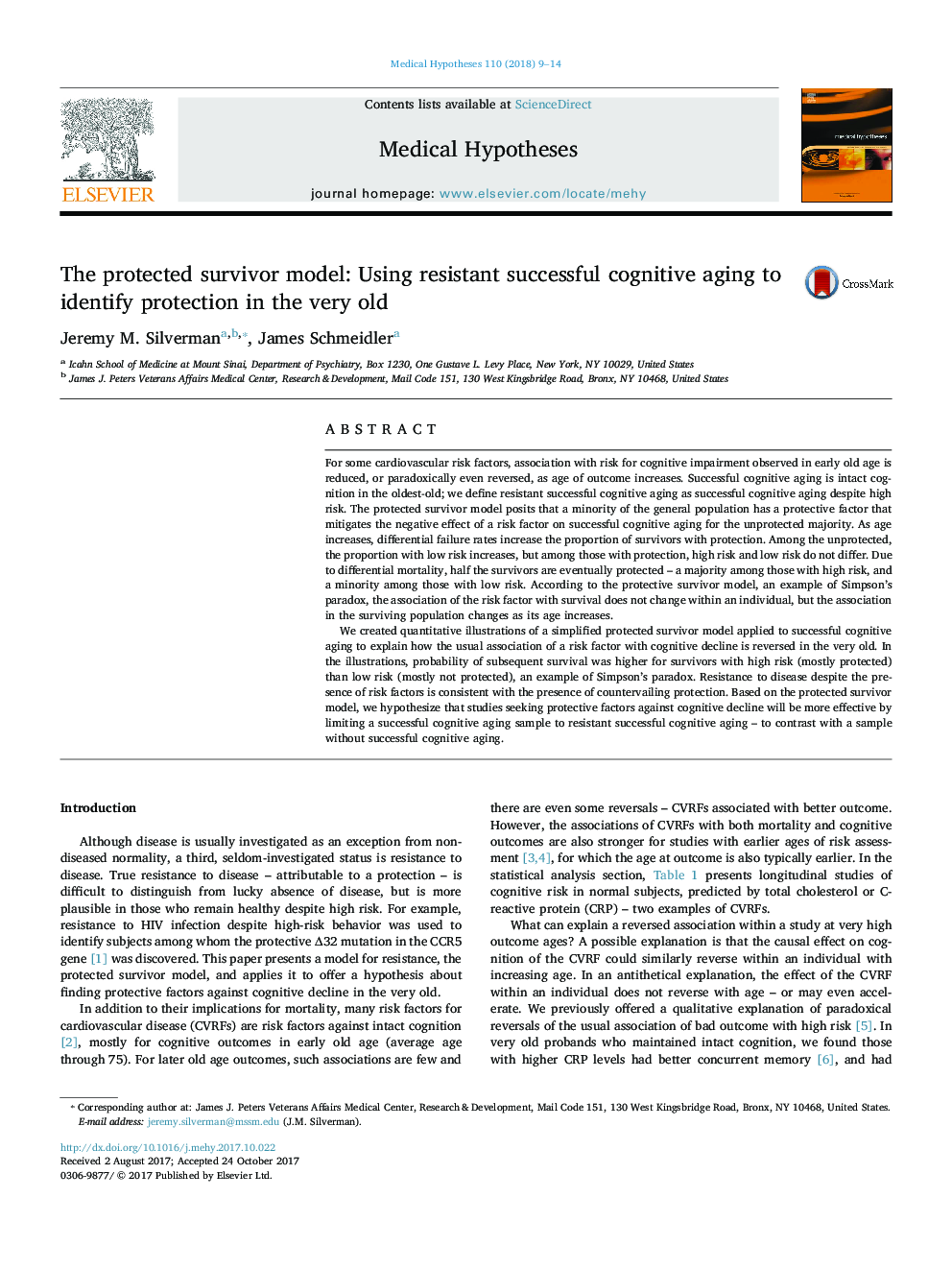| Article ID | Journal | Published Year | Pages | File Type |
|---|---|---|---|---|
| 8516072 | Medical Hypotheses | 2018 | 6 Pages |
Abstract
We created quantitative illustrations of a simplified protected survivor model applied to successful cognitive aging to explain how the usual association of a risk factor with cognitive decline is reversed in the very old. In the illustrations, probability of subsequent survival was higher for survivors with high risk (mostly protected) than low risk (mostly not protected), an example of Simpson's paradox. Resistance to disease despite the presence of risk factors is consistent with the presence of countervailing protection. Based on the protected survivor model, we hypothesize that studies seeking protective factors against cognitive decline will be more effective by limiting a successful cognitive aging sample to resistant successful cognitive aging - to contrast with a sample without successful cognitive aging.
Related Topics
Life Sciences
Biochemistry, Genetics and Molecular Biology
Developmental Biology
Authors
Jeremy M. Silverman, James Schmeidler,
